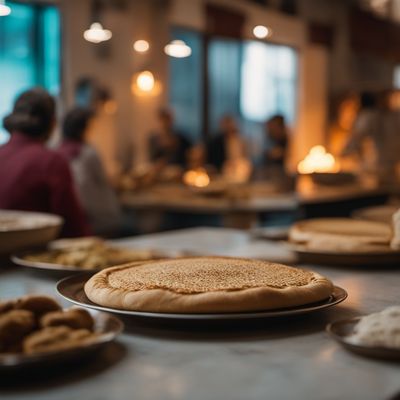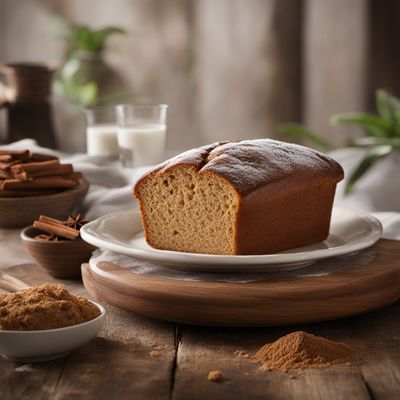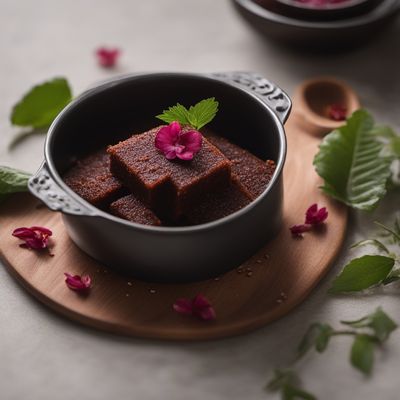
Recipe
Homemade Iraqi Samoon Bread
Flavorful Iraqi Samoon Bread: A Taste of Tradition
4.7 out of 5
Indulge in the rich flavors of Iraqi cuisine with this authentic recipe for homemade Samoon bread. A staple in Iraqi households, Samoon is a soft and fluffy bread with a slightly crispy crust, perfect for sandwiches or dipping in stews.
Metadata
Preparation time
20 minutes
Cooking time
15-20 minutes
Total time
2 hours 15 minutes
Yields
8 servings
Preparation difficulty
Easy
Suitable for
Vegetarian, Vegan (if honey is substituted for sugar), Dairy-free, Nut-free, Soy-free
Allergens
Wheat
Not suitable for
Gluten-free, Keto, Paleo, Low-carb, High-protein
Ingredients
-
4 cups (500g) all-purpose flour 4 cups (500g) all-purpose flour
-
2 teaspoons active dry yeast 2 teaspoons active dry yeast
-
2 tablespoons sugar 2 tablespoons sugar
-
1 teaspoon salt 1 teaspoon salt
-
2 tablespoons vegetable oil 2 tablespoons vegetable oil
-
1 ½ cups (355ml) warm water 1 ½ cups (355ml) warm water
Nutrition
- Calories (kcal / KJ): 180 kcal / 753 KJ
- Fat (total, saturated): 2g, 0.3g
- Carbohydrates (total, sugars): 36g, 2g
- Protein: 5g
- Fiber: 2g
- Salt: 0.6g
Preparation
-
1.In a small bowl, dissolve the sugar in warm water. Sprinkle the yeast over the water and let it sit for 5 minutes until foamy.
-
2.In a large mixing bowl, combine the flour and salt. Make a well in the center and pour in the yeast mixture and vegetable oil.
-
3.Mix the ingredients together until a dough forms. Knead the dough on a lightly floured surface for about 10 minutes until smooth and elastic.
-
4.Place the dough in a greased bowl, cover it with a clean kitchen towel, and let it rise in a warm place for 1-2 hours or until doubled in size.
-
5.Preheat the oven to 220°C (425°F). Punch down the dough and divide it into 8 equal portions. Shape each portion into an oval-shaped loaf.
-
6.Place the loaves on a baking sheet lined with parchment paper. Cover them with a kitchen towel and let them rise for another 30 minutes.
-
7.Bake the Samoon bread in the preheated oven for 15-20 minutes or until golden brown.
-
8.Remove from the oven and let the bread cool on a wire rack before serving.
Treat your ingredients with care...
- Yeast — Ensure that the yeast is fresh and active to achieve a good rise in the dough.
- All-purpose flour — Use a good quality all-purpose flour for the best results.
- Warm water — The water should be warm, around 110°F (43°C), to activate the yeast properly.
- Vegetable oil — You can use any neutral-tasting vegetable oil, such as canola or sunflower oil.
- Sugar — The sugar helps feed the yeast and adds a subtle sweetness to the bread.
Tips & Tricks
- For a richer flavor, you can brush the baked Samoon bread with melted butter or olive oil.
- To achieve a softer crust, cover the bread with a clean kitchen towel immediately after removing it from the oven.
- If you prefer a sweeter bread, you can increase the amount of sugar in the dough.
- Samoon bread is best enjoyed fresh on the day it is baked, but you can store it in an airtight container for up to 2 days.
- To reheat the bread, wrap it in aluminum foil and warm it in a preheated oven for a few minutes.
Serving advice
Serve the freshly baked Samoon bread warm or at room temperature. It is perfect for making sandwiches with various fillings like falafel, grilled vegetables, or hummus. You can also tear it into pieces and use it to scoop up stews, soups, or dips.
Presentation advice
To present the Samoon bread, place it on a rustic wooden board or a bread basket lined with a clean kitchen towel. You can sprinkle some sesame seeds or nigella seeds on top of the bread for an extra touch of visual appeal.
More recipes...
For Samoon
For Iraqi cuisine » Browse all
More Iraqi cuisine dishes » Browse all

Kleicha
Kleicha is a traditional Iraqi cookie that is known for its sweet and spicy flavor. It is perfect for snacking or as a dessert.

Masgouf
Grilled carp in Iraqi style
Masgouf is a traditional Iraqi dish made with grilled carp and a tangy tamarind sauce.

Samoon
Samoon is a traditional Iraqi bread that is similar to pita bread. It is a staple in Iraqi cuisine and is often served with meals or used as a...





